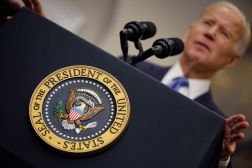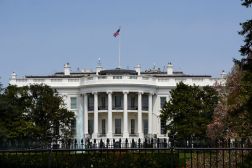 U.S. CIO Steven VanRoekel (Photo: David Stegon/FedScoop)
U.S. CIO Steven VanRoekel (Photo: David Stegon/FedScoop)On the outside, Tuesday’s information technology showdown on Capitol Hill looked like another battle between congressional lawmakers trying to make sure the government spends responsibly and the federal employees on the stand justifying their actions within a constrained government system.
But to hear the two sides talk – primarily House Oversight and Government Reform Committee chairman Congressman Darrell Issa and U.S. Chief Information Officer Steven VanRoekel, whose testimony highlighted the hearing – the two sides may be closer than they think.
The reality is that many of the wasteful acts that Issa and his congressional colleagues championed as to where the government was ineffectively spending money on federal IT are in the process of being changed.
Yes, there are areas that need improvement – VanRoekel admitted to that – but the Obama administration has already put in place a number of programs and policies to fix the problems of the past with an eye to a more efficiently run government IT system.
Issa has other ideas on how to fix the system. His proposed legislation calls for the creation of a Commodity IT Acquisition Center that would be tasked with overseeing large government-wide information technology contracts. Agencies would be required to consult with the center on most acquisitions of more than $500 million.
The center would be housed within a federal agency – instead of being independent – with the Office of Management and Budget selecting the agency with a review every few years. The center would be funded by collecting five percent of fees agencies currently receive for managing several types of government-wide contracts.
Below FedScoop looks at some of the key issues discussed during the hearing and where both sides stand.
On the federal IT budget
- Issa said the federal government will spend more than $74 billion this year on federal technology and has spent more than $600 billion over the past decade, saying the budget – among other things – has become “bloated.”
- VanRoekel countered, saying during the past three years the White House has reversed the IT spending increases that started in the mid-90s. In fact, IT spending has remained flat the past three years and gone down in relation to inflation. VanRoekel argued that without reversing that trend, the federal IT budget would be more than $100 billion annually.
Are there too many federal CIOs?
- Congressional leaders in both parties blamed much of the waste on poor oversight over major projects and a slow-to-react bureaucracy that leaves IT managers without authority to make spending decisions, commenting on the more than 240 CIO or equivalent positions within the federal government. “They’re sitting out there and in many cases they’re toothless tigers,” former representative Tom Davis said of the CIO in charge of computer projects at many agencies. “What you need are lines of authority and decision makers.”
- VanRoekel replied that lines of authority ought to be clearer, but that the problem was more about governance than titles. In fact, one of VanRoekel’s early acts was to issue a memo outlining CIO authorities more clearly. The Government Accountability Office’s Dave Powner, who testified alongside VanRoekel, said that ensuring the specific officials are responsible for specific programs are more important than their title.
Reigning in projects
- Issa quoted experts, saying about three quarters of large federal IT programs are plagued with failures or cost overruns and about 47 percent of agencies IT budgets go toward maintaining “obsolete and deficient” resources.
- VanRoekel has overseen the TechStat process, which aims to look at troubled IT programs, and he introduced PortfolioStat. Those sessions, started last year and continuing annually into the future, take a larger look at the IT spend at any given agency.
Duplicative services
- John Mica, chairman of the Subcommittee on Government Operations, cited a Government Accountability Office report which showed that the federal government funded 622 human resources systems, 580 financial management systems and 777 supply-chain management systems in the past. Those costs, he said, continue to add up.
- VanRoekel has championed the “shared first” policy, calling for agencies to look for shared services as a default to save taxpayer money. That would reduce the number of duplicative IT systems as federal agencies can begin using systems already in place instead of creating their own.






